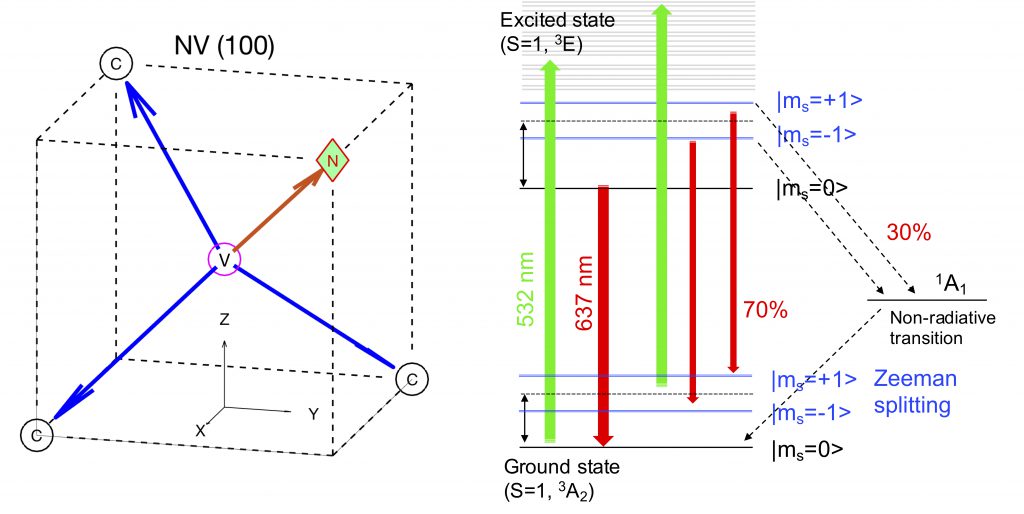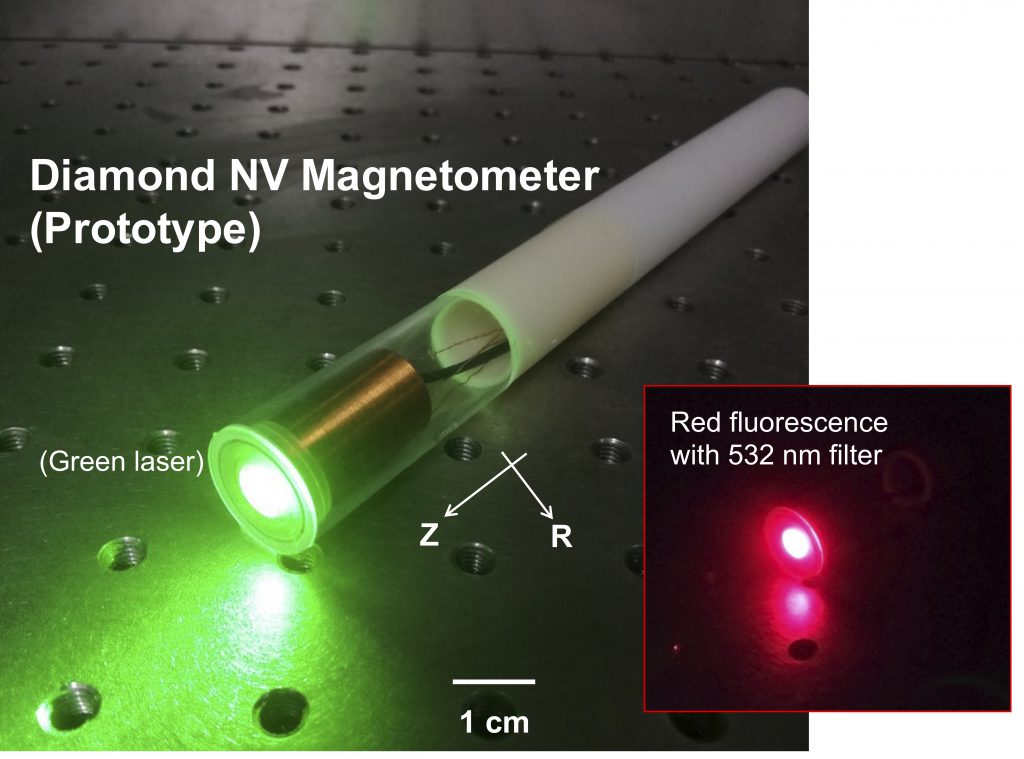In the field of biomedical and medical engineering measurement technology, the first thing that needs to be conveyed is that “all human life activities can be expressed by magnetic fields. The movement of various ions in nerve cells changes the electric potential in the living body, and the flow of electric current maintains our biological activities. The electric current flowing in the body generates a magnetic field. By measuring the magnetic fields generated by living organisms, we can elucidate all aspects of biological activity.
However, by artificially manipulating some of the carbon atoms, it is possible to create vacancies by replacing the carbon with nitrogen and popping off the carbon. In this “nitrogen-vacancy pair,” an extra electron is created, giving rise to an electron spin. By applying this electron spin and observing the quantum state expressed by the red fluorescence excited by green light, it is possible to measure the magnetic fields of various living organisms with ultra-high sensitivity. In order to develop the new academic field of “quantum life,” research activities are being actively carried out around the world by integrating quantum mechanics, life sciences, medical engineering, electrical engineering, magnetic engineering, and optics.
We are developing innovative medical devices for cancer cell metastasis diagnosis by using quantum magnetic sensing technology based on nitrogen-vacancy pairs in diamond. Our goal is to contribute to cancer diagnosis and treatment by measuring the “spatial magnetic field distribution of cancer cells and cancer metastasis,” which has not been possible in the past.
As one of our achievements to date*, we have developed a “diamond magnetic probe” for the diagnosis of breast cancer metastasis. We were the first in the world to mount diamond on a magnetic probe for cancer metastasis diagnosis, and have succeeded in detecting magnetic nanoparticles used in cancer metastasis diagnosis. As a further development, we are developing a new magnetic probe with higher sensitivity to obtain information on the three-dimensional spatial distribution of cancer metastasis. In addition to breast cancer, we are expanding our research to include various cancers such as gastric cancer and uterine cancer, in order to improve the postoperative quality of life of cancer patients and contribute to basic medicine.
*A. Kuwahata et al., Scientific Reports 10, 2483 (2020); “Top 100 in Physics” in Scientific Reports
https://www.nature.com/collections/ihggebhehd
https://www.nature.com/articles/s41598-020-59064-6


